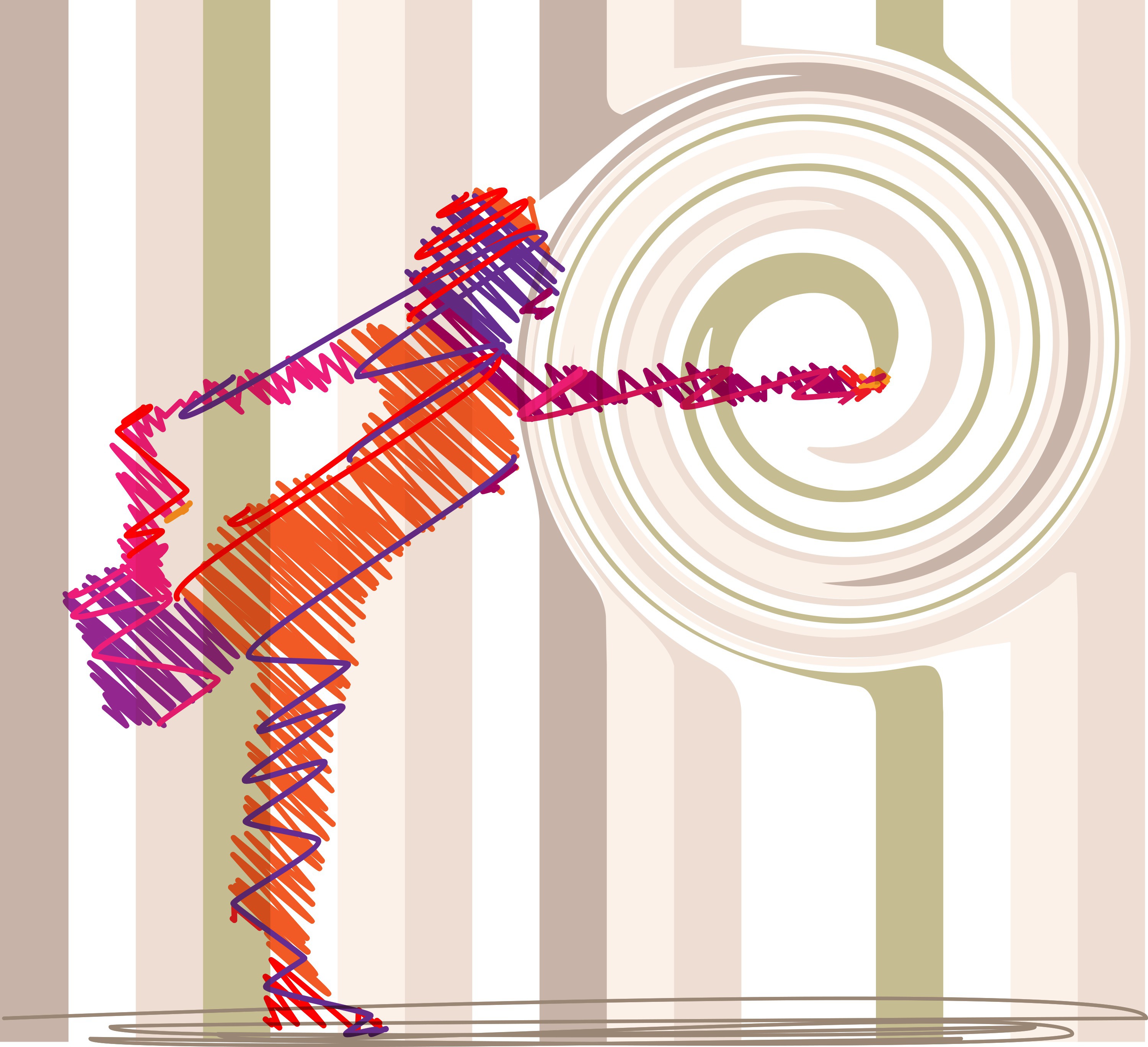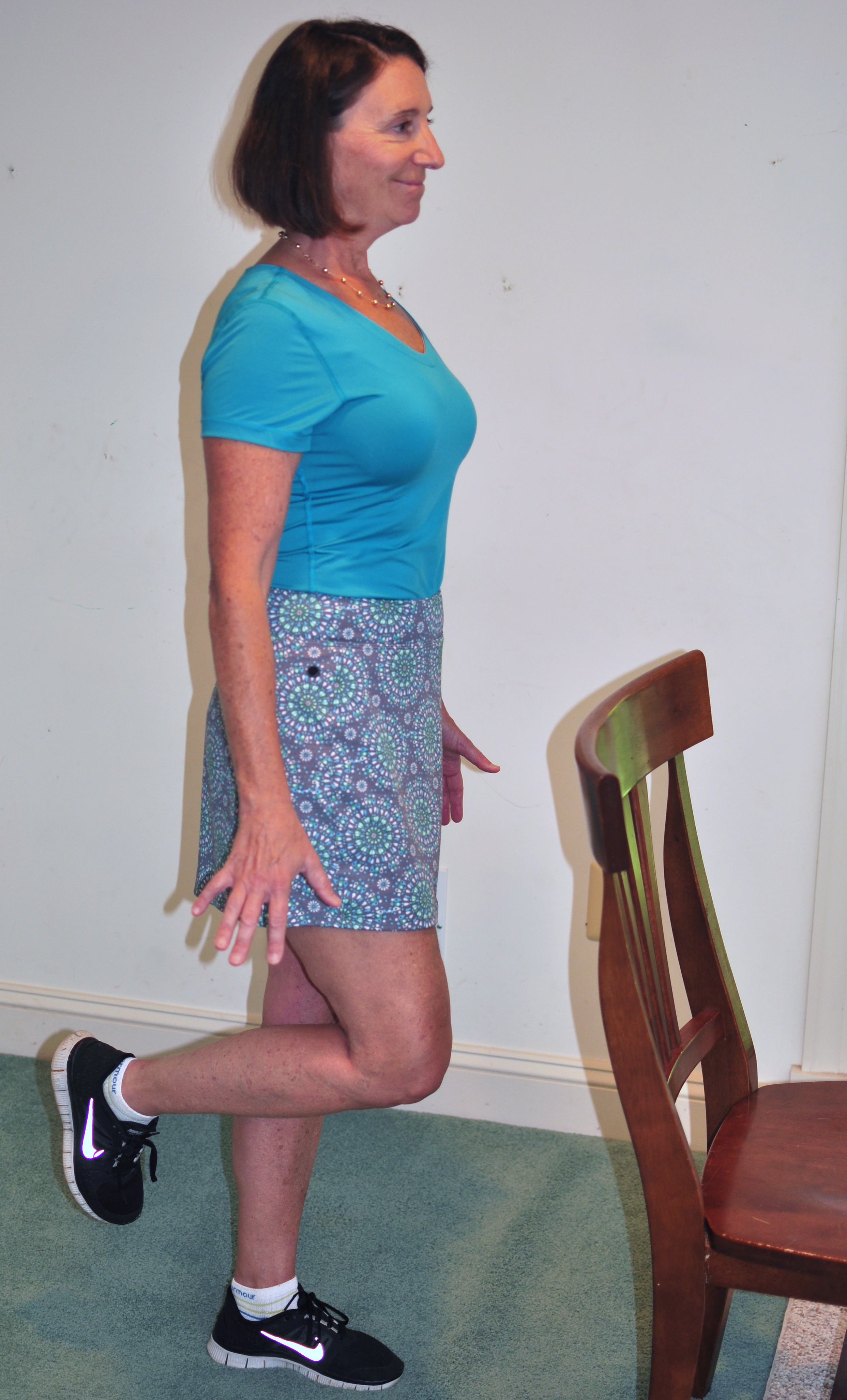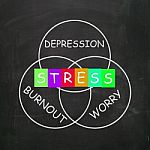
by Susan Brady | Sep 27, 2014 | Nutrition
 Balance develops when we are young, mostly without us even realizing it. We learn to walk, then run, hop on one foot and ride a bike. All a part of growing up, and yet, essential to the development of good balance. As young adults, most of take balance for granted because our bodies make automatic postural adjustments to maintain posture and stability as we stand up from a chair, walk across the grass, step up and down a curb or stumble to the bathroom in the middle of the night. But as we age, our balance begins to decline making us susceptible to falling when a toe accidentally catches the rug or you encounter a slippery or unsteady surface. Even though our balance falters as we age, adding balance activities to your daily routine can not only limit the loss of balance but actually improve it.
Balance develops when we are young, mostly without us even realizing it. We learn to walk, then run, hop on one foot and ride a bike. All a part of growing up, and yet, essential to the development of good balance. As young adults, most of take balance for granted because our bodies make automatic postural adjustments to maintain posture and stability as we stand up from a chair, walk across the grass, step up and down a curb or stumble to the bathroom in the middle of the night. But as we age, our balance begins to decline making us susceptible to falling when a toe accidentally catches the rug or you encounter a slippery or unsteady surface. Even though our balance falters as we age, adding balance activities to your daily routine can not only limit the loss of balance but actually improve it.
Balance depends a complex sensory-motor system. The sensory system includes your vision, the awareness of your body in space and inner ear function. Your brain processes this sensory information and then coordinates the muscles and joints to appropriately maintain balance. There are many factors that can affect our balance system as we age:
• Deteriorating eyesight, especially night vision
• Weakness of the leg, hip and core muscles
• Poor posture making it harder to stand erect and forcing your center of gravity forward
• Decreased reaction time
• Medications that may cause dizziness
Balance training is an essential part of an exercise program for people with osteoporosis or those at risk for bone loss. Preventing fractures, especially of the hip, wrist and spine, begins with preventing falls. Performing balance exercises will help to improve coordination and stability as well as help to strengthening the muscles of your legs and core. Though our balance may decline as we age, balance activities can limit the loss, improve our function and prevent the risk of falls leading to fractures.
Try these balance exercises:
1. EYES OPEN/CLOSED SERIES



Start with your feet together. Keep EYES OPEN for 15 seconds, then CLOSE EYES for 15 seconds.
Next stagger feet, toes of one foot next to heel of other foot, balance with EYES OPEN for 15 seconds, then CLOSED for 15 seconds.
For an extra challenge, place one foot in front of the other, balance with your EYES OPEN for 15 seconds, then CLOSED for 15 seconds.
2. SINGLE LIMB STANCE



Start by standing on one foot, with 3 fingers on a chair or counter, hold for 15 seconds. Next balance with 1 finger for 15 seconds, then slide the finger back and forth 15 times.
If able remove finger and balance unassisted for 15 seconds.
For an extra challenge, try reaching your arms out in front, across your body and down to the floor
3. SIT TO STAND
 Stand up and sit down from a chair 5 times without using your hands. This will challenge your balance as well as work to strengthen the muscles of the hips and legs.
Stand up and sit down from a chair 5 times without using your hands. This will challenge your balance as well as work to strengthen the muscles of the hips and legs.

by Susan Brady | Sep 15, 2014 | Exercise
 You have heard that weight bearing exercises are essential for keeping bones strong, but do you know why? Bone, like every tissue in the body, is constantly repairing and remodeling itself. When bones are stressed, they respond by making new cells, which in turn makes the bone denser and stronger. Weight-bearing exercise, such as walking and running make you work against gravity, causing impact and force through the bones, which in turn stimulates new bone formation.
You have heard that weight bearing exercises are essential for keeping bones strong, but do you know why? Bone, like every tissue in the body, is constantly repairing and remodeling itself. When bones are stressed, they respond by making new cells, which in turn makes the bone denser and stronger. Weight-bearing exercise, such as walking and running make you work against gravity, causing impact and force through the bones, which in turn stimulates new bone formation.
High impact exercises such as running, jumping, dancing, high-impact aerobics, stair climbing, tennis, and hiking are most effective in building bone and keeping bones strong. However, if you have broken a bone due to osteoporosis or are at risk of breaking a bone, you may need to choose a lower impact exercise. Low impact exercises include fast walking on a treadmill or outdoors, using exercise machines like the elliptical trainer or stair stepper and doing low-impact aerobics. Exercises such as swimming and cycling are considered non-weight bearing exercises and may actually lead to a decrease in bone density. These exercises provide little impact through the bone and thus don’t stimulate new bone formation.
Weight lifting has also shown to be beneficial to increasing bone density and preventing bone loss. A strong muscle contraction applies a mechanical force to the bone which begins the process of bone remodeling. Strength training exercises are also beneficial because a force can be placed on a certain region of the skeleton. With osteoporosis, the sites of fractures that are most devastating are the spine and hip. Performing squats, lunges, leg extensions are particularly beneficial in strengthening the bones in the hips and lower spine. Doing pushups, bicep curls and triceps extensions places the force on the arms, the upper spine and the ribs. Multiple repetitions with a challenging load are recommended for optimal stimulation of the bone remodeling process. However, as with any exercise program, slow progression is important to avoid injury.
In general, activities that involve impact and stress are the most effective way to improve bone health. It is never too late to start a bone-healthy exercise program, even if you already have osteoporosis or are at risk of developing osteoporosis. However, if you have osteoporosis it is important to work with a specialist that can guide you to what activities are safe for you, teach you how to stretch and strengthen muscles safely and learn the proper progression of activity. Let me help you develop a safe and effective exercise program to strengthening and maintain strong, healthy bones.
Up next time, the importance of balance, coordination and flexibility for older adults and people who have been diagnosed with osteoporosis.

by Susan Brady | Sep 1, 2014 | Sleep & stress reduction
 We all know how stress can effect our overall health, but did you know that stress also has a negative effect on your bones? In times of stress, the body releases a powerful hormone called cortisol. Cortisol is an essential life hormone, however in excess, it can contribute to many health issues, including bone loss and osteoporosis.
We all know how stress can effect our overall health, but did you know that stress also has a negative effect on your bones? In times of stress, the body releases a powerful hormone called cortisol. Cortisol is an essential life hormone, however in excess, it can contribute to many health issues, including bone loss and osteoporosis.
When the body undergoes stress, cortisol is secreted from the adrenal glands. The main job of cortisol is to signal to the liver to release glucose (sugar) into the system to fuel the muscles for a flight or fight response. Once the stressful situation is over, cortisol levels should return to normal. However, long-term or chronic stress can cause cortisol levels in the body to remain elevated for long periods of time and this can have a negative effect on your health. Sustained elevation of cortisol will begin to cause tissue breakdown and inhibit new tissue formation, including bone.
Bone is a living, dynamic tissue that is always remodeling itself. Old bone is constantly being removed and new bone formed. This process is regulated by two cell types: osteoblasts, which aid in depositing new bone tissue, and osteoclasts, which break down old bone tissue. Disruption to either of these cell types results in changes in bone density. Cortisol disrupts bone formation by interfering with osteoblast formation and stimulating osteoclasts, thereby, leading to a dramatic decrease in bone density.
Cortisol also reduces the absorption of calcium and vitamin D. Vitamin D is necessary for calcium absorption and for maintaining adequate calcium and phosphate concentrations in the blood that are needed for normal bone mineralization.
When treating patients for osteoporosis, stress reduction techniques must be taken into consideration so that bone formation and repair can return to normal.

 Balance develops when we are young, mostly without us even realizing it. We learn to walk, then run, hop on one foot and ride a bike. All a part of growing up, and yet, essential to the development of good balance. As young adults, most of take balance for granted because our bodies make automatic postural adjustments to maintain posture and stability as we stand up from a chair, walk across the grass, step up and down a curb or stumble to the bathroom in the middle of the night. But as we age, our balance begins to decline making us susceptible to falling when a toe accidentally catches the rug or you encounter a slippery or unsteady surface. Even though our balance falters as we age, adding balance activities to your daily routine can not only limit the loss of balance but actually improve it.
Balance develops when we are young, mostly without us even realizing it. We learn to walk, then run, hop on one foot and ride a bike. All a part of growing up, and yet, essential to the development of good balance. As young adults, most of take balance for granted because our bodies make automatic postural adjustments to maintain posture and stability as we stand up from a chair, walk across the grass, step up and down a curb or stumble to the bathroom in the middle of the night. But as we age, our balance begins to decline making us susceptible to falling when a toe accidentally catches the rug or you encounter a slippery or unsteady surface. Even though our balance falters as we age, adding balance activities to your daily routine can not only limit the loss of balance but actually improve it. Stand up and sit down from a chair 5 times without using your hands. This will challenge your balance as well as work to strengthen the muscles of the hips and legs.
Stand up and sit down from a chair 5 times without using your hands. This will challenge your balance as well as work to strengthen the muscles of the hips and legs.








